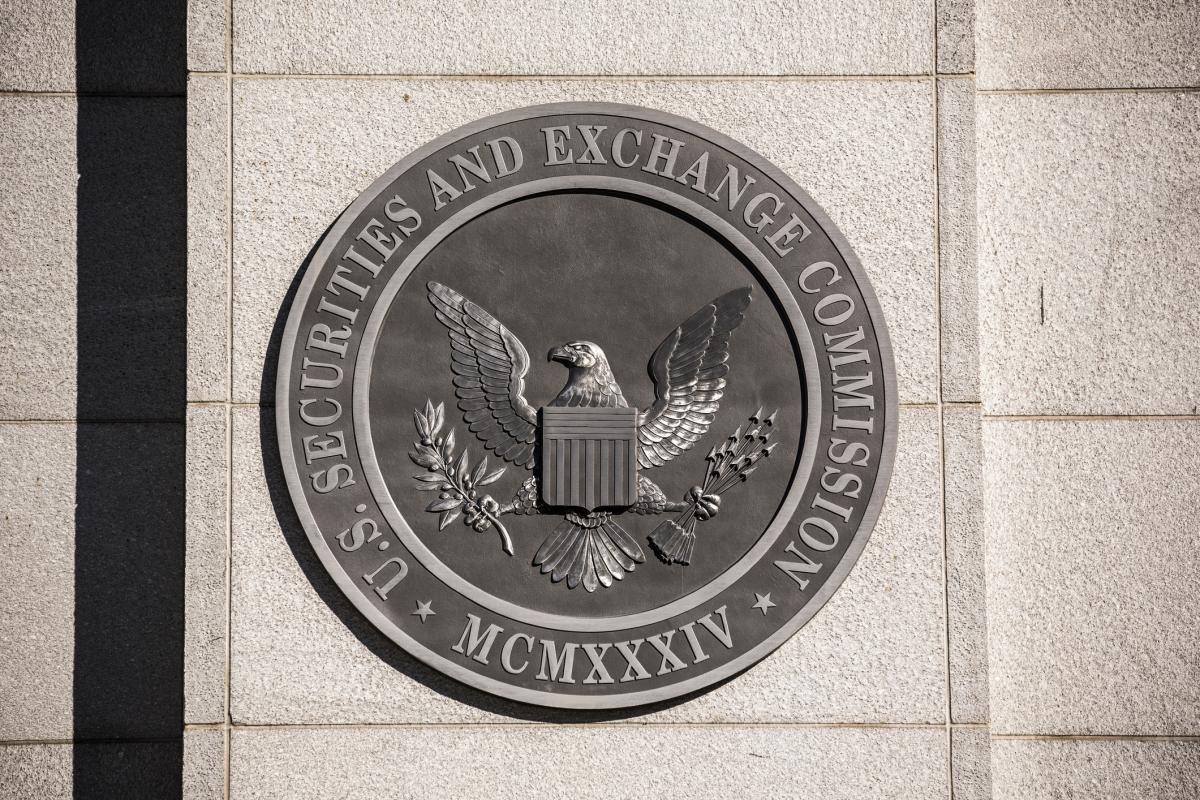By David D. Spaulding, DPS, CIPM, founder and CEO, The Spaulding Group which conducts GIPS® verifications; publishes The Journal of Performance Measurement®; and hosts the Performance Measurement Forum, the Asset Owners’ Round Table, and the Annual PMAR™ Conferences.
If you are registered with the U.S. Securities & Exchange Commission, you’re no doubt aware of the new marketing rules that go into effect in just a few months.
At our recent North American Performance Measurement, Attribution & Risk (PMAR) conference, there was quite a bit of discussion around this topic. While I think the rules are generally quite good, there is some language that is causing some concern and confusion. I have it on “good authority” that we cannot expect the SEC to issue FAQs (Frequently Asked Questions) anytime soon, meaning firms need to either interpret the rules themselves or seek the assistance of their compliance team and/or outside counsel.
I want to comment briefly on three questions that were raised at the conference and share my thoughts with you.1
Portability of Performance
An item that is raising a lot of concerns is the question as to what happens to the track record of a manager a firm acquired, should their investment decision makers depart.
One interpretation is that you will no longer be able to show it.
For example, Firm A acquires Firm B, that is a global equity small cap manager. Firm B has a 15-year track record. The acquisition meets the GIPS® rules (i.e., substantially all the decision makers come along, they have records to support performance, and they continue to manage at Firm A as they did at Firm B).
Firm A immediately showcases Firm B’s track record. The team from Firm B remains at Firm A for five years. Then, the portfolio manager and her performance analyst depart.
Some believe that after this occurs, Firm A can no longer report the performance of Firm B prior to its acquisition. That is, they can’t show the 15-year history prior to the acquisition, just the 5 years since. but can only show the performance since the acquisition.
I believe that under most circumstances, Firm A can show the record. What do I mean “most circumstances”? Well, if the team from Firm B remains at Firm A for at least one year. If they “jumped ship” shortly after the acquisition (e.g., in the first six months), then I believe they wouldn’t be able to.
That is my view. Many take a more conservative view. We will have to wait 2 for something substantial from the SEC, but this is what I believe, based on conversations I have had.
Do I have to go to 10 years?
The new SEC rules essentially endorse the idea of composites. Prior to these rules, it wasn’t difficult for a manager to showcase their past performance using representative portfolios, model performance, back-tested performance, a subset of accounts in the strategy, and other forms of hypothetical performance.
But, the new rules make this quite difficult, so full composites are going to be the way to go.
Let’s say Firm X wants to comply with the GIPS standards, and they have a Global Bond strategy that they’ve managed for 12 years. Historically, the firm has used a “rep portfolio” to market this product, but now must create a composite. Because of the large number of portfolios and challenges with historical records, they have opted to only go back five years.2
The new marketing rules require firms to show 1-, 5-, and 10-year annualized returns.
Must the firm go back to 10 years, even though for GIPS purposes they only need five?
I believe they will be required to go back. This will, for many firms, be difficult to achieve. Hopefully, I am wrong. Attribution: net and gross?
What about risk?
Firms must show net returns with equal prominence to gross.
Does this extend to performance attribution?
Well, is attribution “performance”?
Is it “returns? I’d say “no.”
It explains where the returns came from but isn’t returns. I therefore believe that the firm need only show attribution using gross-of-fee returns.
The reality is that showing for net-of-fee returns would be challenging, as it would require the firm to spread the fee across sectors, securities, etc. In addition, what possible insights would we gain from such an analysis?
This question can be extended to risk measures. E.g., if the firm shows, for example, tracking error and standard deviation using gross-of-fee returns, must they show the statistic for net-of-fee, too? One can only hope not.
Consider the case where fees are taken out quarterly. This means that with every quarter, the gross- and net-of-fee returns will be identical; the third month they’ll be different. This difference will introduce false volatility, that can be misleading.
What about risk-adjusted returns; must they be shown net and gross?
This is different. I would make the case that for a true risk-adjusted return (e.g., Modigliani-Modigliani), the answer would be YES! For Jensen’s alpha, which is a risk-adjusted excess return, I’d also say YES!
What about Sharpe ratio, Treynor ratio, Sortino ratio, and Information ratio? Aren’t they risk-adjusted returns? Actually, they aren’t; they’re ratios. Must they be shown using net-of-fee returns, too? I would say probably. I can see where there would be value in seeing these statistics based on net returns.
What say you?
You’re invited to share your thoughts on this. The next year or so should be quite interesting as firms adopt the new rules and the SEC eventually chimes in with a bit more details on topics like these.
Endnotes
1. I should probably point out that I am not an attorney, though my girlfriend is, so perhaps that helps? I am a guy that’s been in the industry nearly 40 years, has worked with the performance presentation standards for 30 years, and has spent a great deal of time in performance measurement, so I’d like to think my views have some value, but you get to decide.
2. Recall that the GIPS standards require a minimum of five years or since inception (if the firm or strategy exists for less than five years), building to ten years.
The Spaulding Group is a great source for content and videos on performance related issues like this:
About the Author:
David D. Spaulding, DPS, CIPM is an internationally recognized authority on investment performance measurement. He’s the Founder and CEO of The Spaulding Group, Inc., and founder and publisher of The Journal of Performance Measurement®.

He consults to clients throughout the world on investment performance and risk issues. In addition, he teaches classes on performance measurement and attribution, and regularly conducts GIPS® verifications.
Dave is a prolific writer, having written numerous articles for various publications. He’s also the author of four books: Measuring Investment Performance (McGraw-Hill, 1997), Investment Performance Attribution (McGraw-Hill, 2003), The Handbook of Investment Performance (TSG Publishing, 2005),and The Handbook’s second edition (2011); co-author of The Spaulding Group’s Guide to the Performance Presentation Standards: Second Edition (TSG Publishing, 2012); contributing author of Performance Measurement in Finance (Butterworth-Heinemann, 2002); and is a co-editor and contributing author of Readings in Fixed Income Attribution (TSG Publishing, 2007) and Classics in Investment Performance Measurement (TSG Publishing, 2009).
He has served on numerous industry committees including the USIPC (United States Investment Performance Council, formerly the North American Investment Performance Committee; and prior to that, the AIMR-PPS Implementation Subcommittee), the Investment Performance Council (IPC), the IPC’s Interpretations Subcommittee, and the Performance Measurement Forum’s Hedge Fund and IIR Working Groups.
Dave served in the United States Army for five years, where he earned the rank of Captain. He held various leadership positions with the Field Artillery while serving with the 25th Infantry Division (Schofield Barracks, HI) and the Field Artillery School (Ft. Sill, OK). In addition, he served as an operations research analyst at the Field Artillery School (Ft. Sill, OK).
He earned a BA in Mathematics from Temple University, an MS in Systems Management from the University of Southern California, an MBA in Finance from the University of Baltimore, and a doctorate in Finance and International Economics from Pace University.
Dave spent six years in local politics including a four-year term as Mayor for the Township of North Brunswick (NJ), a community of 38,000 people. As the chief executive officer for the township, he was responsible for over 250 employees and a budget in excess of $30 million.
Dave and his wife of 47+ years, Betty, live in South Brunswick, NJ. In addition to their two sons, Chris and Doug, they have three grandchildren (Brady, Caden and Sonia). Dave is an avid reader, with rather eclectic tastes. He also enjoys listening to books on Audible, while driving and exercising. He remains a hopeful (hoping to find time to play; hoping to improve) golfer.
The Spaulding Group, Inc. is the fastest-growing verification firm, serving clients around the globe, with assets ranging from less than $100 million to more than $1 trillion. They provide an array of performance measurement services and products, including consulting.
The Performance Measurement Forum was founded in 1998, and has become the place for performance industry leaders to discuss various performance, attribution, risk, regulatory, and topics related to the GIPS® standards, as well as learn from the knowledge base that each person brings to the table. Since the beginning, the forum has contributed to enhancing the role of performance in the investment industry. The Asset Owner Roundtable was added in 2013 to fill a demand needed by the asset owner community. PMAR North America, PMAR Europe, and PMAR West have become the performance measurement, attribution and risk events that peers across the globe attend on an annual basis.




